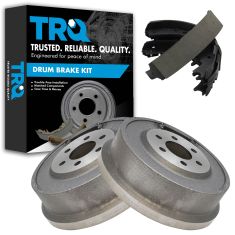1ABPS03161-Ford Dodge Lincoln Rear Brake Shoes TRQ BFA73707

Replaces
2002 Dodge Dakota with 11.00 Inch Rear Drums Rear Brake Shoes TRQ BFA73707

Get the kit
Product Reviews
Loading reviews
5.00/ 5.0
1
1review
Rear break shoes
July 24, 2023
Perfect
Customer Q&A
When you by one, Is it for both wheels?
December 2, 2022
10
Yes, this is a set of brake shoes for both sides for the rear.
December 2, 2022
Andra M
Dodge is a registered trademark of FCA US LLC. 1A Auto is not affiliated with or sponsored by Dodge or FCA US LLC.
See all trademarks.












